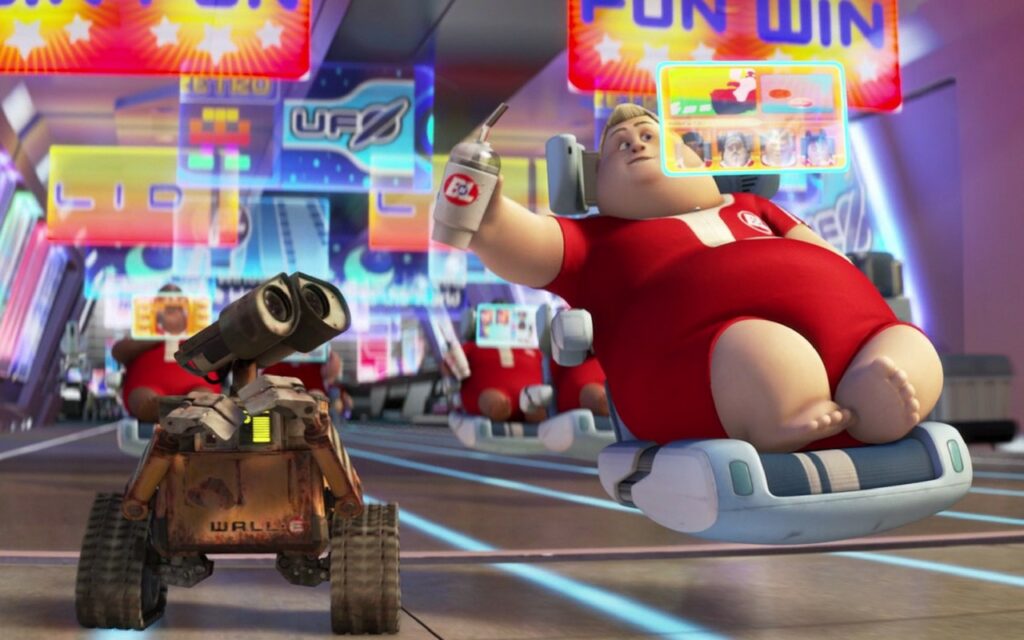Directed by Andrew Stanton, screenplay by Stanton and Jim Reardon, story by Stanton and Pete Docter
I’m going to pick 13 movies. They may be an influence on my writing, on my filmmaking, or on my thinking. They may just be movies I like. There may be more than 13.
From 1995’s Toy Story to 2019’s Toy Story 4, Pixar Animation Studios could do no wrong. While some of the sequels (like Monsters University and Cars 3) underwhelmed, they weren’t bad movies. They were more than offset by a parade of instant classics like Monsters, Inc., Finding Nemo, The Incredibles, Inside Out, and all the Toy Story films. Whether you were 3 or 103, you were guaranteed a blast at the movies if a Pixar feature was on the marquee.
You were also guaranteed to cry. Something about the way Pixar handled pathos in their movies made them unmatched in animation or cinema in general. Their films were beautiful and groundbreaking, yes. But they endure because they were powerful, universal, and full of emotional cannonballs. Put a group of Hells Angels, Navy SEALS, and Instagram narcissists in a room with the first ten minutes of Up and see if they can leave unmoved by Carl and Ellie’s story.
There is one exception among the worthies. That film is Wall-E, and even though I did not cry or get watery-eyed, I can’t stop thinking about this movie. This is a Pixar film that’s full of delight, yes, but also laced with smart, acid commentary. In the film, we the human race have laid waste to the planet, piling it so high with trash it’s become a lifeless landfill. One automated robot still runs, compacting trash long after his brethren have bit the dust. Therein lies the first satirical blow—Wall-E and his kind were never meant to succeed. Like the refuse they collect, they were designed with obsolescence in mind.
But Wall-E persists. And in doing so, he discovers plant life stubbornly growing in spite of our best efforts. Through a chain of events involving scout robot EVE, Wall-E ends up on a bloated space cruiser where the Earthlings have taken refuge. Here we see what became of them/us: we became soft, protoplasmic cripples, fed a steady diet of junk food, soda, and screen entertainments. The humans’ appendages have atrophied into pseudopods, and they (we) depend on hovering recliner chairs to support our flabby bodies. Other robots do all the work. They even have personalities, from the OCD scrubber robot to the monomaniacal AUTO. In the end, the humans regain their human agency. They band together against AUTO and return to the ruined Earth, ready to roll up sleeves and subdue the land.
That was 2008. It is now 2024, and I wonder—nay, I know—the film would end differently today.
If Wall-E were made today, would the life of the humans on the Axiom be criticized the same way? Would the people rally against their robot overlords? And would they accept the challenge of rejuvenating a polluted Earth? Or would they realize they have a good deal floating in hover chairs and drinking milkshakes on demand? In Wall-E, there is no diabetes, no shortness of breath, no deaths of despair. The people seem not to need purpose, at least until they tackle the generational task of reviving the planet. Here, on 2024 Earth, we need work. We need purpose. We need more than the temporary fix of sugar, salt, and screen. And yet, there seems to be a growing doubt in these…axioms.
In the developed world, there is talk of universal incomes. We yearn for “fully automated luxury communism,” however that’s supposed to work. No one would produce anything—no goods, no art, no cleanliness. That’s for the machines. Work is an anathema—hard, unpleasant at times, a sour contradiction to our supposed autonomy and awesomeness. Screens are omnipresent; we need never be bored or even half-entertained. Obesity and disability are epidemic. We need not wait for cheese fries when Doordash can deliver without us lifting a finger. (“Alexa! I want nachos!”) Like the humans in Wall-E, what we think manifests—almost as if we’re God speaking the universe into existence.
Wall-E and the moviegoing audience of 2008 (in the nascent days of the iPhone) understood this life is a dead end. Today, I fear children and adults would watch this gem of a movie and puzzle why the humans would give up the good life for a difficult one of toil. (And purpose. And satisfaction of accomplishment.) After COVID, we no longer even gather to watch movies. We stream them in the comfort and aloneness of our living rooms. Since we don’t pay for tickets, we have no need for patience. If a film doesn’t break through our short attention span, pause, stop, and find something else. Get a snack. Look at your phone during the slow parts.
Watch Wall-E again. See what Andrew Stanton and the filmmakers saw coming, how the humans of 2008 regarded what we might become—and how right they were. Think about it long enough, and maybe it will make you cry. Pixar’s good at that.

